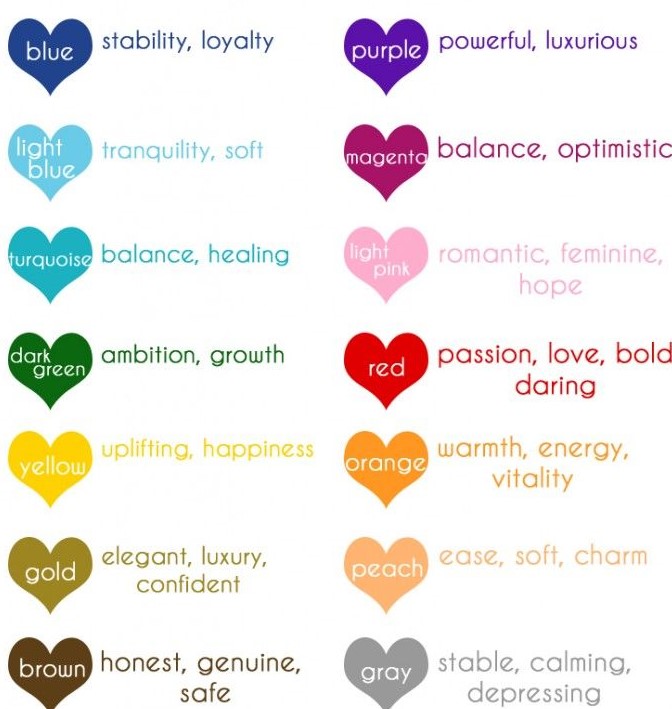The heart is often viewed as the epicenter of our emotions and feelings, resonating deeply with love, compassion, and connection. But did you know that the color of a heart can convey more than just affection? Each color has its own unique meaning, representing a wide array of emotions and experiences. Understanding heart color meaning can enhance our ability to communicate and connect with others on a deeper level.
In various cultures and contexts, colors evoke different feelings and reactions, making the study of heart color meaning a fascinating exploration of human psychology and emotions. Whether you see a red heart symbolizing passionate love or a blue heart representing tranquility and peace, each hue tells its own story. By delving into the meanings behind these colors, we can gain insight into our own emotions and those of the people around us.
Moreover, as digital communication takes center stage in our lives, emojis have become an essential part of expressing our feelings in a visually engaging way. The heart emoji, with its vibrant colors, serves as a universal symbol of love and affection. But what exactly do these colors signify? Understanding heart color meaning can help us better articulate our emotions and intentions, leading to more meaningful interactions.
What Does Each Heart Color Mean?
Heart colors are not just decorative; they possess significant meanings that can influence how we perceive emotions. Here’s a quick rundown of common heart colors and their meanings:
- Red: Passionate love and desire.
- Pink: Affection, romance, and tenderness.
- Blue: Calmness, trust, and loyalty.
- Green: Growth, harmony, and balance.
- Black: Mourning, loss, or deep sorrow.
- Yellow: Happiness, friendship, and joy.
- Purple: Spirituality, luxury, and creativity.
- White: Purity, innocence, and new beginnings.
How Does Culture Influence Heart Color Meaning?
Culture plays a significant role in shaping our understanding of heart color meaning. In Western cultures, for example, red is widely recognized as the color of love and passion. However, in some Eastern cultures, red symbolizes luck and prosperity rather than romantic love. This variation highlights the importance of cultural context when interpreting heart colors.
Are There Any Psychological Implications of Heart Colors?
Yes, the colors we associate with hearts can have psychological implications. For instance, red hearts can evoke feelings of excitement and passion, while blue hearts might instill a sense of calm and trust. Understanding heart color meaning can provide insight into our emotional states and help us communicate more effectively with others.
Can Heart Color Meaning Change Over Time?
Absolutely! Just like our emotions evolve, so can the meanings we attribute to different colors. A heart that once represented passionate love may transform into a symbol of friendship as relationships change. This fluidity is essential to recognize, as it reflects our personal growth and changing circumstances.
How Do Emojis Impact Our Interpretation of Heart Colors?
In the digital age, emojis have transformed the way we express emotions, and heart emojis are no exception. Each colored heart emoji can convey different feelings, and their meanings can vary based on context. For example, a red heart emoji is commonly used to express true love, while a blue heart emoji may signify trust or deep friendship. Understanding heart color meaning in the context of emojis can enhance our digital communication.
What Heart Color Should You Use in Different Situations?
Choosing the right heart color can depend on the situation and the emotions you want to convey. Here are some guidelines:
- Red: Use for romantic gestures or expressing love.
- Pink: Ideal for showing affection or friendship.
- Blue: Best for conveying trust and loyalty.
- Green: Great for expressing growth or healing.
- Black: Use cautiously, often associated with sorrow.
- Yellow: Perfect for conveying happiness and positivity.
- Purple: Good for expressing creativity and spirituality.
- White: Use for purity and new beginnings.
Can Heart Color Meaning Help in Relationships?
Yes, understanding heart color meaning can significantly enhance communication in relationships. By being aware of the implications of different heart colors, partners can more effectively express their emotions and intentions. This awareness can lead to a deeper understanding and connection between individuals, fostering a more harmonious relationship.
How Can We Use Heart Color Meaning in Everyday Life?
Incorporating heart color meaning into our daily lives can be a fun and insightful practice. Here are some ways to do it:
- Decor:** Use heart-shaped decor in different colors to set the emotional tone of a space.
- Gift-Giving: Choose gifts with heart colors that resonate with the recipient's feelings.
- Social Media: Use colored heart emojis to express your emotions in posts and comments.
- Personal Reflection: Reflect on your emotions and choose a heart color that represents your current state.
Conclusion: What Have We Learned About Heart Color Meaning?
In conclusion, the heart color meaning serves as a powerful tool for expressing our emotions and understanding ourselves and others. By recognizing the significance behind each color, we can enhance our communication and foster deeper connections. Whether in personal relationships, social media, or everyday life, the colors we choose can profoundly impact how we convey our feelings.



